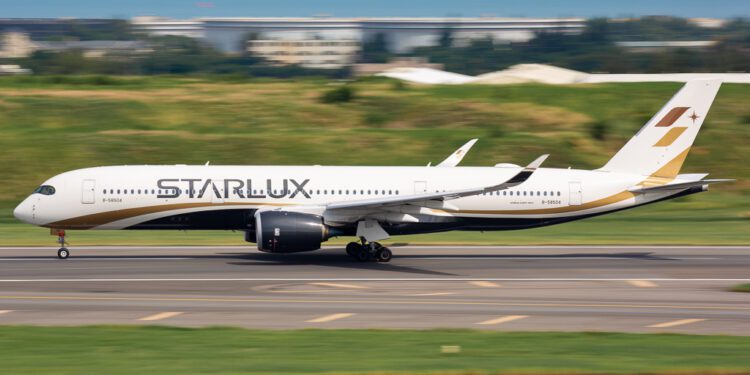Starlux is delivering impressively premium PaxEx aboard its widebodies. Image: Jeremy Dwyer-Lindgren
This isnтАЩt an accident. Starlux officials told CNN in a December 2019 pre-launch interview that all those amenities equals a higher cost: тАЬwe offer exquisite service items, so the fare will be slightly higher than the other airlines.тАЭ
Conscious capacity choices
Second, while some industry watchers see the explosion of service to Seattle be an unsustainable glut of seats, Starlux disagrees.
тАЬI think the capacity put into this route is the still rather small,тАЭ Starlux chief strategy officer Simon Liu told Runway Girl Network in a recent interview.
тАЬWeтАЩre not only targeting traffic between Taipei and Seattle,тАЭ he said. тАЬLook into the entire network in Southeast Asia and combine the population between Southeast Asia and North America. It is huge.тАЭ
Indeed, StarluxтАЩs intra-Asia network, which began in earnest in 2021 after a Covid pause, leans heavy into Southeast Asia. Japan is also well represented, rounding out the whose who of popular destinations in Asia for Americans.
Codeshare beneifts
Third, Seattle isnтАЩt just about Seattle. ItтАЩs also about Alaska; Alaska Airlines, that is. The codeshare is StarluxтАЩs first, enabling passengers on both carriers to book itineraries on either carrier from either website.
тАЬIt helps us connect our passengers from Seattle to more than 100 cities in the US, making us very confident of our operation in SeattleтАЭ, Liu told RGN.
Though he declined to give precise numbers, Alaska, he said, has been a huge help in filling out its nascent Seattle flights, both in terms of cash booking and mileage redemptions. The first flight to Taipei went out with a 99% load factor, and RGNтАЩs flight with Starlux a few days later was similarly full.
Liu said the partnership has seen SeattleтАЩs forward bookings already outperforming both San Francisco and Los Angeles, both of which have been running daily service for months.
Whether or not Starlux will formally join an alliance is not currently clear. Oneworld would make a lot of sense, but Liu said only that the airline was looking at alliances carefully.

As for where Starlux will expand to next, Liu said a few more Southeast Asia destinations are in the pipeline, including Jakarta. North American plans remain more hazy, or at least if Liu knows, heтАЩs keeping it close to the vest.
тАЬEverybody talks about New York, and New York is under our radar. But we are also looking into many destinations,тАЭ he said, before rattling off cities like Chicago, Dallas, D.C., and Phoenix.
Many of those cities are dependent on the carrier receiving more airplanes, something Starlux like many others, has struggled with of late.
тАЬOverall, the aircraft delivery status with both Boeing and Airbus is getting challenging,тАЭ he said. тАЬWe do what we can, build our plan with more flexibility.тАЭ But delays on building out the network are inevitable, he said.
Related Articles:
Featured image credited to Jeremy Dwyer-Lindgren
Source link : http://www.bing.com/news/apiclick.aspx?ref=FexRss&aid=&tid=66cc6e287b6e4a6e878233cea6387363&url=https%3A%2F%2Frunwaygirlnetwork.com%2F2024%2F08%2Fstarlux-cso-talks-seattle-market-entry-alaska-airlines-codeshare%2F&c=1928400146237731161&mkt=en-us
Author :
Publish date : 2024-08-26 00:32:00
Copyright for syndicated content belongs to the linked Source.












